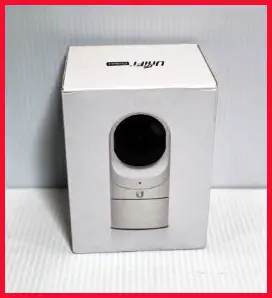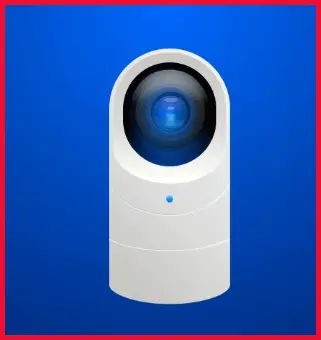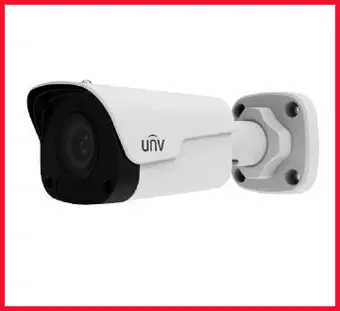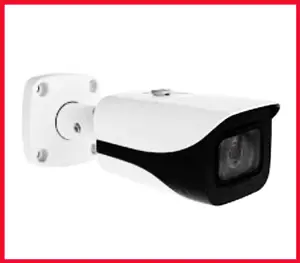I’ve spent countless hours tinkering with home security systems, chasing that perfect balance of reliability, features, and ease of use. In this 3200-word article, I’ll walk you through my experience comparing UniFi Protect and Blue Iris, two heavyweights in the surveillance world. My goal? To help you decide which system fits your needs by breaking down their pros, cons, and key features in a conversational, real-world way. From setup to mobile apps, I’ve got you covered with a comparison table, detailed analysis, and answers to common questions.
Comparison Table: Unifi Protect Vs. Blue Iris
| Feature | UniFi Protect | Blue Iris |
| Platform | UniFi NVR or Cloud Gateway | Windows PC |
| Camera Compatibility | UniFi cameras, limited ONVIF support | Any ONVIF/RTSP camera |
| AI Detection | Built-in (license plate, people, pets) | DeepStack AI (customizable) |
| Setup Difficulty | Easy, plug-and-play | Moderate, requires configuration |
| Mobile App | Polished, iOS/Android | Functional, UI3 web or paid app ($9.99) |
| Cost | Higher (proprietary hardware) | Lower (software + existing PC) |
| Storage | Local (HDD/SSD in NVR) | Local (PC storage) |
| Remote Access | Simple, no port forwarding | VPN or port forwarding required |
| Maintenance | Low, set-it-and-forget-it | Moderate, occasional tweaks |
| Power Consumption | Low (dedicated hardware) | Higher (PC running 24/7) |
My Journey Into Home Surveillance
Also Read: My Thought on The 8th Street Hidden Camera Detector Reviews

A few years back, I decided my home needed a proper security setup. I wasn’t thrilled about cloud subscriptions or flimsy Wi-Fi cameras, so I turned to wired systems for reliability. After researching, I narrowed it down to UniFi Protect and Blue Iris—two systems that promised local storage and advanced features. I’ve used both extensively, installing UniFi Protect on a UNVR for my parents’ house and running Blue Iris on a dedicated Windows PC at my place. Each has its quirks, and I’m here to share what I’ve learned.
UniFi Protect: The Polished Ecosystem
UniFi Protect is Ubiquiti’s all-in-one surveillance solution, built around their proprietary cameras and network video recorders (NVRs) like the UNVR or Cloud Key Gen2 Plus. It’s designed to “just work,” and in my experience, it delivers on that promise—most of the time.
Key Features I Love
The setup process is a breeze. I plugged in the UNVR, connected my UniFi G4 Pro cameras, and the system auto-detected them. Within 20 minutes, I was watching crystal-clear 4K feeds on the Protect mobile app. The app is a standout: sleek, intuitive, and packed with features like timeline scrubbing, motion event playback, and push notifications. I could check on my parents’ house from anywhere without fiddling with VPNs or port forwarding.
UniFi’s AI detection is impressive. The G5 series cameras can identify people, pets, and even license plates, reducing false alerts from swaying trees or passing cars. I tested this at night, and the IR range on the G4 Pro was solid, lighting up my driveway like a stage. Storage is straightforward—pop in a hard drive, and you’re set. My UNVR with a 4TB drive held about two weeks of footage for six cameras.
Pros That Won Me Over
- Ease of Use: The plug-and-play setup and polished interface make it beginner-friendly. I didn’t need to be a tech wizard to get it running.
- Mobile App: The iOS and Android apps are top-notch, with fast access to live feeds and recordings. My parents, who aren’t tech-savvy, had no trouble using it.
- Privacy: No cloud subscriptions or data leaving your network unless you choose remote access via UniFi’s secure portal.
- Reliability: Once set up, it’s a set-it-and-forget-it system. I haven’t touched the UNVR in over a year, and it’s still humming along.
- Aesthetics: UniFi cameras look sleek, blending into modern homes better than bulky alternatives.
Cons That Gave Me Pause

The biggest downside is the cost. UniFi Protect locks you into their ecosystem, and their cameras aren’t cheap. A single G4 Pro can set you back $450, and you’ll need a UNVR ($300+) or Cloud Key Gen2 Plus ($200) to run the system. For my six-camera setup, I spent over $2,000—ouch. Compare that to Blue Iris, and it’s a tough pill to swallow.
Camera compatibility is another sore spot. Until recently, UniFi Protect only supported UniFi cameras. They’ve added limited ONVIF support, but it’s half-baked—third-party cameras don’t get motion triggers or AI features without an expensive AI key. I tried adding a Reolink camera, and it was a clunky experience.
Low-light performance is decent but not class-leading. My G4 Pro struggled in pitch-black areas without external IR illuminators, unlike some Dahua cameras I’ve tested. Also, if you’re running Protect on a UniFi Dream Machine Pro, high network traffic can interrupt recordings. I noticed this when my parents’ house had a big family gathering, and the system skipped a few clips.
Blue Iris: The Diy Powerhouse
Blue Iris is a Windows-based software that turns any PC into a surveillance hub. It’s the go-to for tinkerers who want total control and don’t mind rolling up their sleeves. I’ve been running it on an old i5-10400 PC with 16GB RAM, paired with a mix of Reolink, Hikvision, and Dahua cameras.
Key Features That Impressed Me
Blue Iris’s flexibility is unmatched. It supports virtually any camera with ONVIF or RTSP protocols, letting me mix and match brands. I paired a $75 Annke 4K turret with a $200 Dahua Starlight, and both worked flawlessly. The DeepStack AI integration is a game-changer—you can train it to detect specific objects, like distinguishing my dog from a raccoon. I fine-tuned it to ignore squirrels, cutting down false alerts by 80%.
The UI3 web interface is a lifesaver for remote access. After setting up a VPN, I could view my cameras from anywhere using a browser. Blue Iris also lets you customize motion zones, recording schedules, and storage settings. I set it to record 24/7 on my 8TB drive but only save motion clips for 30 days, saving space without losing critical footage.
Pros That Kept Me Hooked
- Camera Flexibility: Use any ONVIF/RTSP camera, from budget Reolink to high-end Dahua. I saved hundreds by mixing brands.
- Cost-Effective: A one-time $70 license, plus a $30 annual support fee, is a steal. My PC was already lying around, so my total cost was under $500 for eight cameras.
- Customization: DeepStack AI and granular settings let you tailor the system to your needs. I spent hours tweaking motion zones, but it was worth it.
- Feature-Rich: From multi-camera playback to home automation integration, Blue Iris does it all. I linked it to Home Assistant to trigger lights on motion.
- Community Support: Forums like IP Cam Talk are goldmines for troubleshooting and tips. I fixed a storage bug in minutes thanks to user advice.
Cons That Tested My Patience

Blue Iris isn’t for the faint of heart. Setup took me a full weekend, tweaking camera streams, motion settings, and DeepStack. If you’re not tech-savvy, the learning curve is steep. I helped a friend set it up, and he was overwhelmed by the menus.
Maintenance is another headache. My system crashed twice last year—once due to a full temp folder, another when DeepStack stopped detecting. I had to disable Windows updates to prevent random reboots, which isn’t ideal for security. The mobile app ($9.99) is functional but dated, and push notifications were hit-or-miss on Android. I ended up using UI3 via a browser, which worked better but felt clunky.
Power consumption is a silent killer. My PC draws 100W running 24/7, adding $10-15 to my monthly electric bill. UniFi’s UNVR sips power by comparison. Lastly, remote access requires a VPN or port forwarding, which can be a security risk if not configured properly. I spent hours hardening my network to avoid vulnerabilities.
Head-To-Head: Which System Wins?
Choosing between UniFi Protect and Blue Iris depends on your priorities. Here’s how they stack up in key areas:
Ease of Setup
UniFi Protect is the clear winner here. I had it running in under an hour, with cameras auto-detected and the app ready to go. Blue Iris took days of tweaking to get right, and even then, I had to revisit settings for optimal performance. If you value simplicity, UniFi is your pick.
Cost
Blue Iris is a budget champ. For $70 plus a cheap PC and cameras, you can build a robust system. My eight-camera setup cost $450, cameras included. UniFi Protect’s proprietary hardware and cameras make it pricier—my six-camera system was $2,000. If cost is a factor, Blue Iris is hard to beat.
Camera Compatibility
Blue Iris runs circles around UniFi. I could use any camera I wanted, from $50 Reolinks to high-end Dahuas. UniFi’s limited ONVIF support feels restrictive, and their cameras are overpriced for the specs. For flexibility, Blue Iris is king.
AI and Motion Detection

Both systems shine here, but in different ways. UniFi’s built-in AI is seamless, identifying people and vehicles out of the box. Blue Iris’s DeepStack requires setup but offers unmatched customization. I trained it to ignore my neighbor’s cat, something UniFi couldn’t do. For tinkerers, Blue Iris edges out; for simplicity, UniFi takes it.
Mobile Experience
UniFi’s app is a joy—fast, polished, and reliable. Blue Iris’s app feels like a relic, and UI3, while functional, isn’t as slick. If you check cameras often on your phone, UniFi’s app will make you smile.
Reliability And Maintenance
UniFi Protect is a set-it-and-forget-it dream. I haven’t touched my parents’ system in over a year. Blue Iris needs occasional babysitting—crashes, storage issues, and AI glitches pop up every few months. For low maintenance, UniFi wins hands-down.
Privacy and Security
Both store footage locally, which I love for privacy. UniFi’s remote access is simpler and more secure, using their cloud portal without port forwarding. Blue Iris requires a VPN or port forwarding, which demands network know-how to lock down. UniFi feels safer for non-experts.
My Real-World Experience
At my parents’ house, UniFi Protect was a no-brainer. They wanted something simple, reliable, and easy to check from their phones. The UNVR and G4 Pro cameras delivered, and they’ve had zero complaints. The app’s timeline feature made it easy to find footage of a delivery guy dropping a package, and the AI cut down on false alerts.
My Blue Iris setup, on the other hand, is my pride and joy—but it’s a labor of love. I spent weeks perfecting motion zones and AI settings, and the results are stellar. I caught a raccoon raiding my trash can at 2 a.m., thanks to DeepStack’s precise detection. But when the system crashed during a power outage, I lost a day’s footage and spent hours troubleshooting. It’s powerful but demanding.
Who Should Choose What?
If you’re like my parents—wanting a hassle-free system with a great app and don’t mind spending more—UniFi Protect is your match. It’s perfect for small to medium setups (4-10 cameras) and users who value polish over customization.
If you’re a tinkerer like me, love saving money, and want total control, Blue Iris is your playground. It’s ideal for larger setups (8+ cameras) or those with specific camera needs. Just be ready to invest time and patience.
Frequently Asked Questions (Faq)
It depends on your needs. UniFi Protect is easier to use and more reliable, but Blue Iris offers unmatched flexibility and customization for tech-savvy users.
Yes, they’re solid, with good image quality and AI features. But they’re pricey, and low-light performance lags behind competitors like Dahua.
Absolutely, if you’re willing to tinker. It’s feature-rich, cost-effective, and supports any camera, but it requires maintenance and tech know-how.
Yes, but with limitations. ONVIF support exists, but third-party cameras don’t get motion triggers or AI features without an AI key.
Conclusion: Your Security, Your Choice
Also Read: My Thought on The 8th Street Hidden Camera Detector Reviews
I’ve lived with both UniFi Protect and Blue Iris, and they’re both fantastic in their own ways. UniFi Protect won my parents’ hearts with its simplicity and slick app, while Blue Iris fuels my inner geek with its endless customization. You can’t go wrong, but your choice boils down to what you value: plug-and-play polish or DIY power. Think about your budget, tech comfort, and how much time you want to spend tweaking. Whichever you pick, you’ll sleep better knowing your home is secure.
